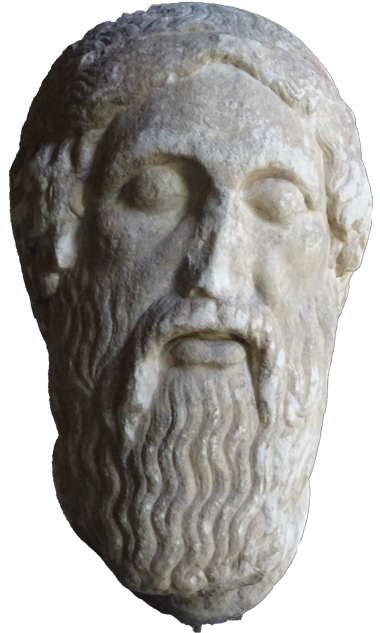Strabo's channel
One of the sources of inspiration in Odysseus Unbound is a passage in the Geography of Strabo, 10.2.15. This passage was taken to mean that modern Cephalonia was once two islands divided by a channel, the western one being ancient Ithaca, the eastern ancient Samos:
where the island is narrowest it forms an isthmus so low-lying that it is often submerged from sea to sea. Both Paleis and Crannii are on the gulf near the narrows.
Strabo was writing about Cephallenia, as it was then spelled. He had access to maps now lost to us. If we look at modern maps, we are likely to see things from a different perspective. The narrowest part might be considered the “neck” that connects north and south Paliki, that is, from Chalkes Beach in the west to Livadi Beach in the east, a little more than 3 kilometres. Another possibility might be Thinia Valley between Paliki in the west and the main part of Cephalonia in the east, that is, from Koumaria Beach in the south to Ag. Kiriaki Beach in the north, about 4 kilometres. This is the “Strabo’s Channel” of Odysseus Unbound.
But Strabo wrote of an isthmus not a channel.
If we look at the island as a whole, from old sketch maps as Strabo must have done, the narrowest part of the island is clearly the Assos Peninsula in the north-east. And there, on the western side, is an isthmus! It leads to the famous Venetian fortress of Assos.
This 1825 map also shows the locations of the ancient cities Paleis and Cranii mentioned by Strabo, in the narrows of Argostoli Bay.
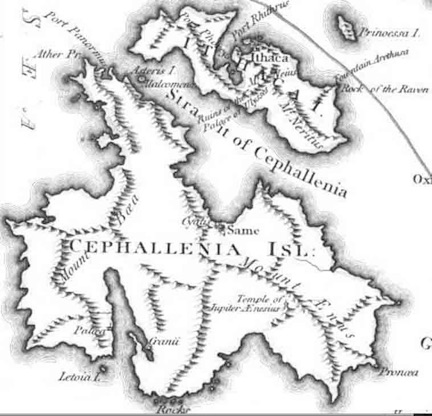
Jean-Jacques Barthélemy, Maps, Plans, Views and Coins: Illustrative of the Travels of Anacharnis the Younger in Greece, in the middle of the fourth century, before the Christian æra, 6th edition (London, 1825), Plate 26
Many other early maps show that the Assos Peninsula is where “the island is narrowest.” Here are some examples:
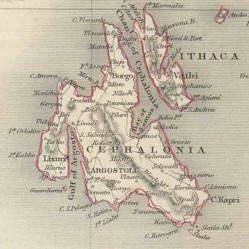
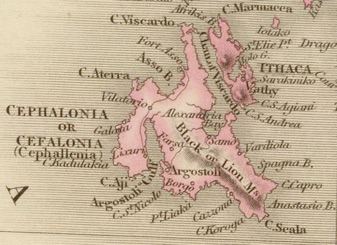
Sydney Hall, Greece (London, 1828)
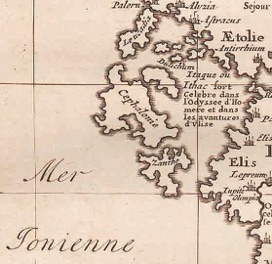
Jean Baptiste Bourguignon d'Anville,
Les Côtes de la Gréce et l'Archipel
(Paris, 1756)
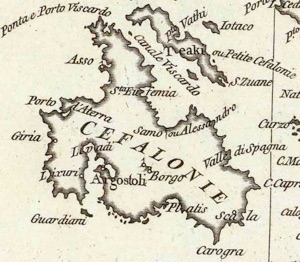
Henri Abraham Chatelain and Nicolas Gueudeville, eds., Atlas Historique (Amsterdam, 1739)
None of this is to say there was never a channel between Paliki and the main part of Cephalonia, only that what Strabo was referring to was an isthmus, not a channel.
Professor G. L. Huxley made this point in his review of Odysseus Unbound in Hermathena, No. 182, Summer 2007, p. 166. The references to the maps are mine.
